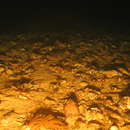Brief Summary
provided by Ecomare
Jelly bryozoans are colony-forming bryozoans, where the colonies resemble thick branched cartilage fingers. They attach to seaweed, stones, shellfish or crab shells. The shape of the colonies can vary greatly and are sometimes incomparable with anything else. Some biologists just refer to them as 'a marine thing' instead of their name. There are several species of jelly bryozoans, but the transparent species is the most common. The different species are often only recognizable under the microscope. Colonies that have broken away from their underground are regularly found on the beach. Jelly bryozoans are common in the North Sea.
- license
- cc-by-nc
- copyright
- Copyright Ecomare
Alcyonidium (bryozoan): Brief Summary
provided by wikipedia EN
Alcyonidium is a genus of bryozoans in the order Ctenostomatida.
- license
- cc-by-sa-3.0
- copyright
- Wikipedia authors and editors
description
provided by World Register of Marine Species
Lang bleef de identiteit van deze soorten een mysterie. Door gebrek aan verkalking en skeletkenmerken is het onderscheiden van soorten moeilijk. Recent onderzoek bracht klaarheid in de ware identiteit van sommige soorten. Over deze familie is nog volop onderzoek bezig en het laatste woord is er zeker nog niet over geschreven. Het aantal tentakels varieert binnen één soort volgens groeiplaats en concurrentiedruk. Een combinatie van kenmerken zoals kolonievorm, kleur, aantal tentakels, voortplantingswijze en substraatvoorkeur maken een betrouwbare determinatie mogelijk. Genetisch onderzoek geeft in twijfelgevallen uitsluitsel. De meeste soorten broeden embryo’s in de zoïden en brengen larven voort. Andere soorten scheiden eieren af die zich in de waterkolom ontwikkelen tot larve. Enkel de soorten die eieren voortbrengen (A. condylocinereum, A. parasiticum en A. mytili), ontwikkelen een intertentaculair orgaan. Dit orgaan speelt een rol in de opname van sperma en het uitscheiden van eieren en is, indien aanwezig, een goed determinatiekenmerk.
De_blauwe, H. (2009). Mosdiertjes van de Zuidelijke Bocht van de Noordzee: Determinatiewerk voor België en Nederland. Vlaams Instituut voor de Zee, Oostende. 464.
- license
- cc-by-4.0
- copyright
- WoRMS Editorial Board

